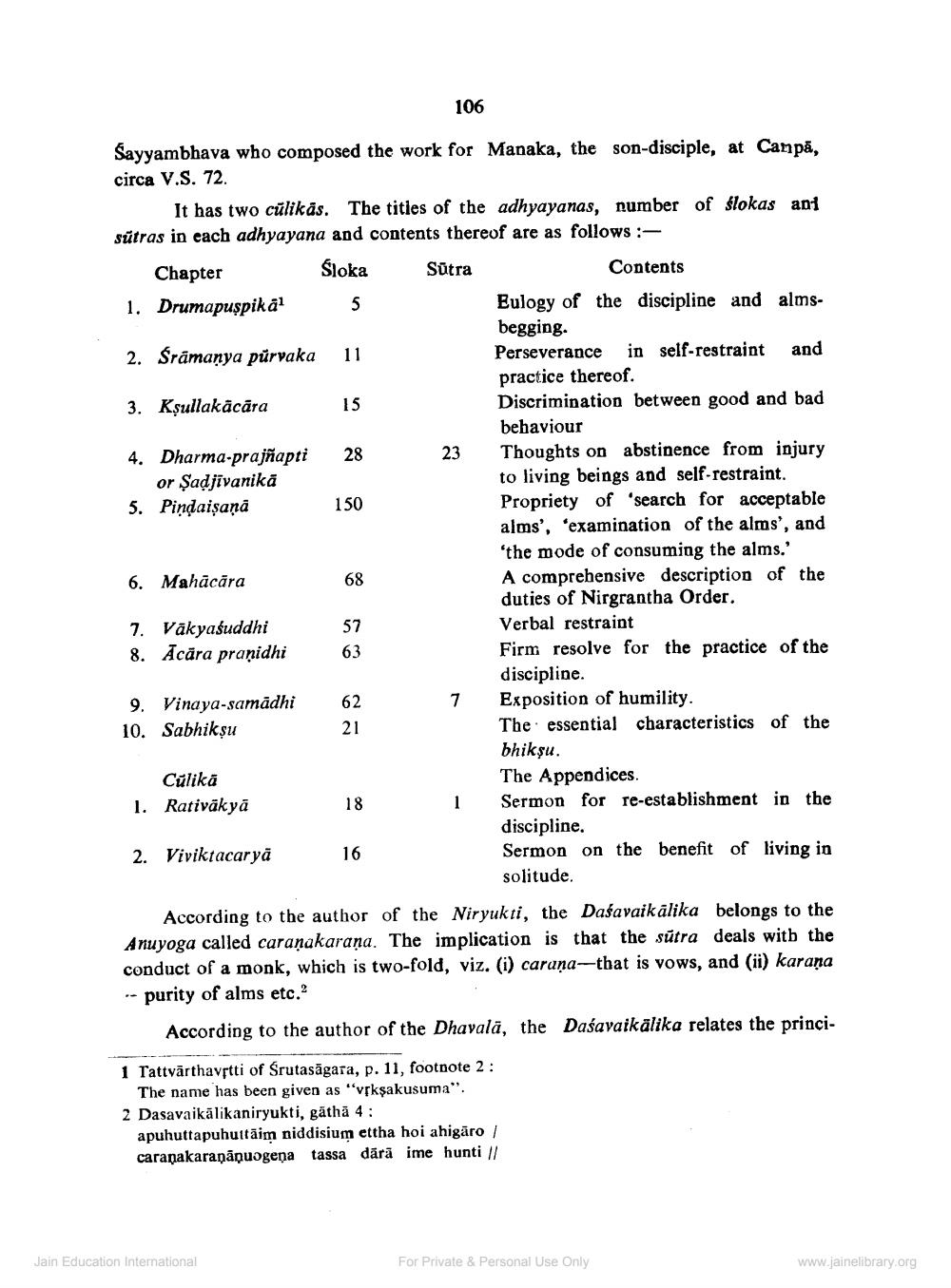________________
106
Sayyambhava who composed the work for Manaka, the son-disciple, at Canpă, circa V.S. 72.
It has two cūlikās. The tities of the adhyayanas, number of ślokas ant sütras in each adhyayana and contents thereof are as follows:-- Chapter Sloka Sutra
Contents 1. Drumapuspika 5
Eulogy of the discipline and alms
begging. 2. Śrāmanya pūrvaka 11
Perseverance in self-restraint and
practice thereof. 3. Kșullakācāra
Discrimination between good and bad
behaviour 4. Dharma-prajñapti 28 23 Thoughts on abstinence from injury or Şadjivanikā
to living beings and self-restraint. 5. Pindaişaņā
Propriety of 'search for acceptable alms', 'examination of the alms', and
'the mode of consuming the alms.' 6. Mahācāra
A comprehensive description of the
duties of Nirgrantha Order. 7. Vākyasuddhi
Verbal restraint 8. Ācāra praạidhi
Firm resolve for the practice of the
discipline. 9. Vinaya-samadhi
Exposition of humility. 10. Sabhikṣu
The essential characteristics of the
bhikṣu. Cúlikā
The Appendices 1. Rativäkya
18
Sermon for re-establishment in the
discipline. 2. Viviktacarya 16
Sermon on the benefit of living in
solitude. According to the author of the Niryukti, the Daśavaikālika belongs to the Anuyoga called caraṇakaraņa. The implication is that the sūtra deals with the conduct of a monk, which is two-fold, viz. (i) caraña--that is vows, and (ii) karana -- purity of alms etc.?
According to the author of the Dhavalā, the Daśavaikälika relates the princi
1 Tattvārthavrtti of Srutasāgara, p. 11, footnote 2:
The name has been given as "vrksakusuma". 2 Dasavaikälikaniryukti, gäthà 4:
apuhuttapuhuitāim niddisium ettha hoi ahigāro / caranakaranaquogena tassa dära ime hunti //
Jain Education International
For Private & Personal Use Only
www.jainelibrary.org




